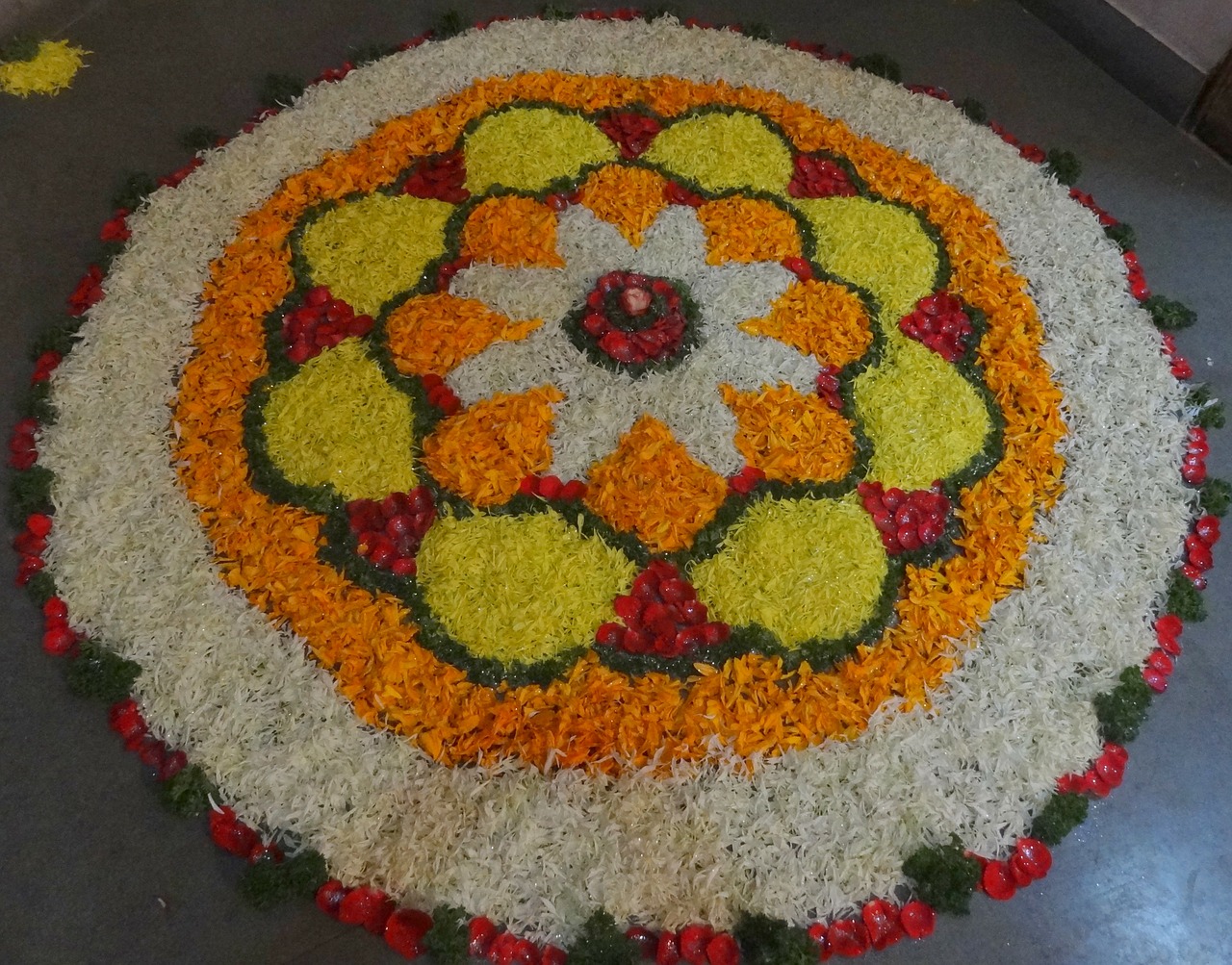Rangoli or Alpana is a design made with the help of coloured rice, flowers, sand or paint. It is generally made at the entrance of the house or at a common place where everyone can see it, it is also done on the temple floor in the house.

Interesting facts about Rangoli
This is a native art form of the region specifically in India, Nepal and Bangladesh. Interestingly rangoli has been around even before the EPICS of Hindu religion were written. It finds a mention in the epics of Hindu religion.
In the modern world rangoli is made on the floor and the walls to decorate the house on a special occasion. To make it simple even cut outs or stickers of rangoli are available. But the authentic hand made rangoli is the best.
What is the significance of rangoli?
In Indian tradition rangoli is meant to symbolize tradition, hope and beauty.
They are generally done by the mother or daughters of the household. It is an auspicious activity which was done on a daily basis but it has now become occasional.
The purpose of this rangoli drawing was to feel generosity and welcome. It was thought to be associated to good luck. The designs vary from place to place and also according to the occasion.
It was done by girls to depict their beauty at art and made intricate designs with just hands. The rangoli is also believed to have a calming effect on the mind of the person who is seeing it and then entering.
As it is on the doorstep every visitor is bound to notice and feel welcome. They make the guest feel calm and relaxed, he or she is able to enjoy his/ her visit and becomes comfortable.
What is special about Rangoli on Diwali?
In ancient times women used to sit around and make this rangoli and also sing hymns or bhajans. As this rangoli making was a part of the prayer activity in the house.

It is specially made of Diwali in almost in each house of India. It is known to have a link with the spiritual energy of the house. It is said to create an energy centre and have a good and positive impact on the people and the environment of the house.
Mostly natural products from around the house hold are used. On Diwali Sindoor is used to incorporate the design of feet of Goddess Lakshmi. Fresh flowers, petals and diyas are also used to decorate them.
Have you noticed there is a symmetry in the rangoli design?
The Rangoli Design is associated with the channelizing of energy into the house and enhancing the positive energy. The higher and sharper the energy level is desired the sharper is the design of the Rangoli. It has been compared to the De Vinci’s eye. The rangoli is known to represent order, serenity and harmony that exists in the nature.
What is rangoli made of?
Those who make it on a regular basis keep the design simple and commonly make it using rice powder and coloured sand. Earlier this was done with only hands but now many women have innovated and started using bottles and sprinklers to give a three D effect as well as make the job easier.

Also a few set stencils are available or the pattern that you would want to make. There are holes only the part that needs to be made. So simple pour colour onto the stencil and wallah the design is made. These days people also use paint to make it more colourful and attractive, another benefit is that it will stay there longer.
Different designs of rangoli
Rangoli can be widely divided into two groups.
- One is geometrical and
- other being ornamental.
In the geometrical rangoli design there is usage of shapes like circles, squares. Cones and triangles etc. to make it attractive. They can be made intricate and the person making it can enlarge or make it smaller on their own wish later as well. As adding a similar shape on all sides or removing it will alter the size but not harm the design.
While in the ornamental rangoli design there is depiction of animals, birds, trees, flowers or even gods. These need to be made on the set pattern and with proper planning. The direction also has to be specified and a rough sketch has to be made first, so as to know the shape and direction of the final result. We can not invert a god or a flower. It must look straight from outside the house. Also, the size has to be taken in care according to the space available for drawing.
Easy tips for designs:
- Start with a relaxed mind and extra time at hand. You must have patience to make it.
- Keep extra material before starting. Be prepared to make it a couple of times as it may not come out good the first time.
- Specify the space and outline it with chalk to be sure to fit in the design, try keeping it away from the passage. So that everyone does not step on it.
- Select a design and make a rough draft. If possible, draw it on the floor with the help of a chalk. You can also make an outline on the newspaper and keep it on the floor for reference.
- Select colours wisely according to the light that falls on that part of the floor.
- You can mix and match the material being used, such as flowers and petals can be incorporated along with dry powder.
- If it is a windy space try to use paints or use wet colours so that the rangoli does not get blowen away.
- You can use glitter as well.
- On the eve of Diwali people light up their designs with the use of small earthen lamps.
We hope our suggestion are useful for you and you are able to make an amazing design of rangoli for your home. Have a happy celebration ahead, enjoy!
You may also like: Benefits of drawing for kids
- Teaching kids good manners – बच्चों मे उत्तम और अच्छे शिष्टाचार बढ़ाये – बच्चों को बचपन में ही सिखाएं ये 10 बातें

- Holi Water Guns – 10 best pichkaari to buy this Holi

- World Happiness Day – The International Day of Happiness – March 20

- Picture books for preschoolers – Why childrens picture book are so important?

- Childrens day 14th November – happy children day – Chacha Nehrus Birthday


